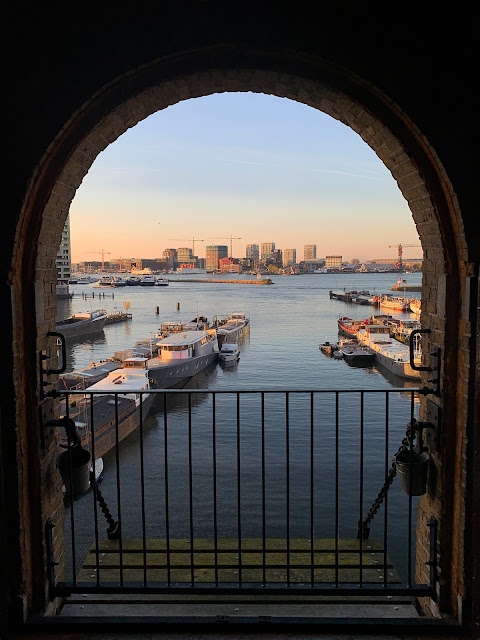Travel with a disability can be a smooth, enjoyable journey
From searching for accessible destinations to packing medical documentation, there are tools to overcome obstacles
While sitting at the Baltimore Washington International airport in March 2019, Lily Yu and her husband were getting energized for a trip to Europe.
 |
| A view from Bak Restaurant of the IJ River in Amsterdam. Lauren J. Mapp |
They received meal vouchers around midnight and noticed the other passengers getting angry after the Wow Airlines employees made an announcement. Because Yu and her husband are both deaf, they didn’t understand what had happened until they made calls with a sign language interpreter through a video relay service.
“We found out Wow Air was bankrupt, so they couldn’t run anymore,” she said through an interpreter. “We were in shock and did not know what to do.”
Stranded at the airport, they went home. They couldn’t get a refund from the car rental or the hotel, Yu said, and Wow Air’s phone line was busy and the website had shut down.
“It was the worst day of our lives,” Yu said.
Traveling with a disability or chronic health condition can be more difficult than it is for someone who is able-bodied, but not impossible.
Yu and her husband finally made it on that trip, albeit a few days late, and she has since made traveling a side career. She has visited 49 states and nearly 40 countries since she started traveling at age 12. Her Instagram travel account — @DeafJourney — has amassed a following of more than 34,000, as well as hundreds of subscribers on YouTube and nearly 68,000 followers on TikTok.
If you want to see the world but don’t know where to start, these tips can help you get on the road.+
This story was first published in The San Diego Union-Tribune online and in print on June 21, 2022. To see the rest of this story in its original form with images, click the link above.


Comments